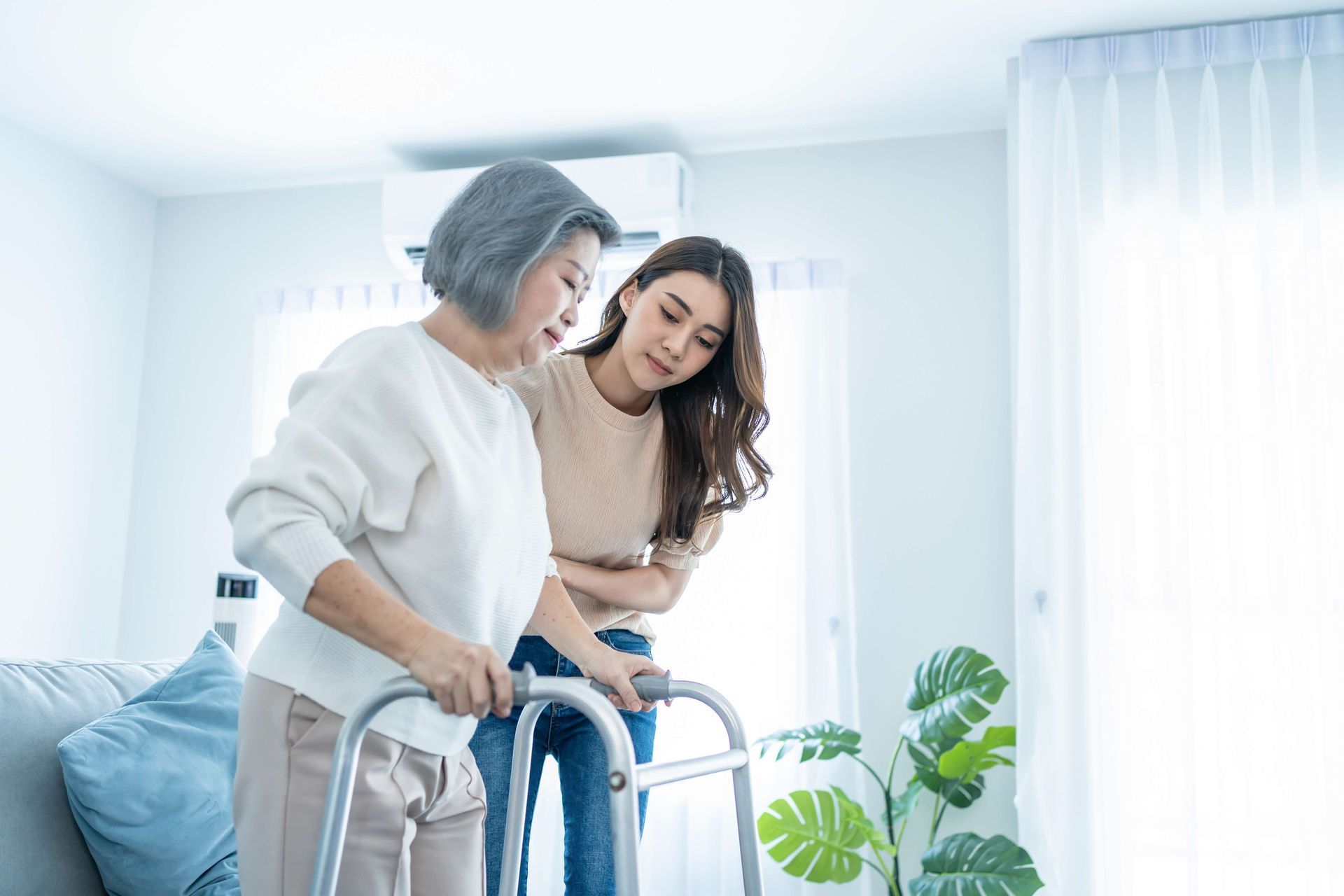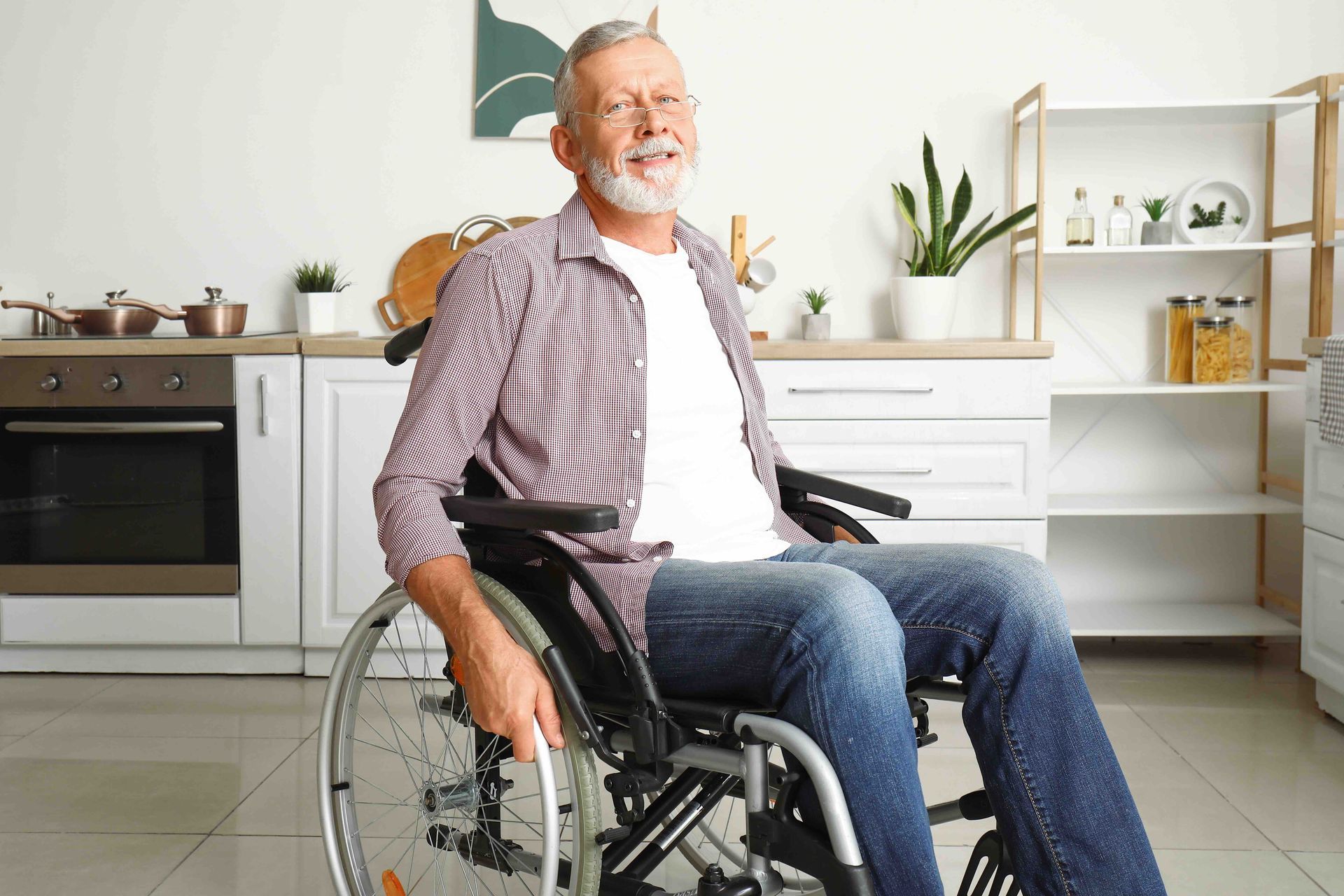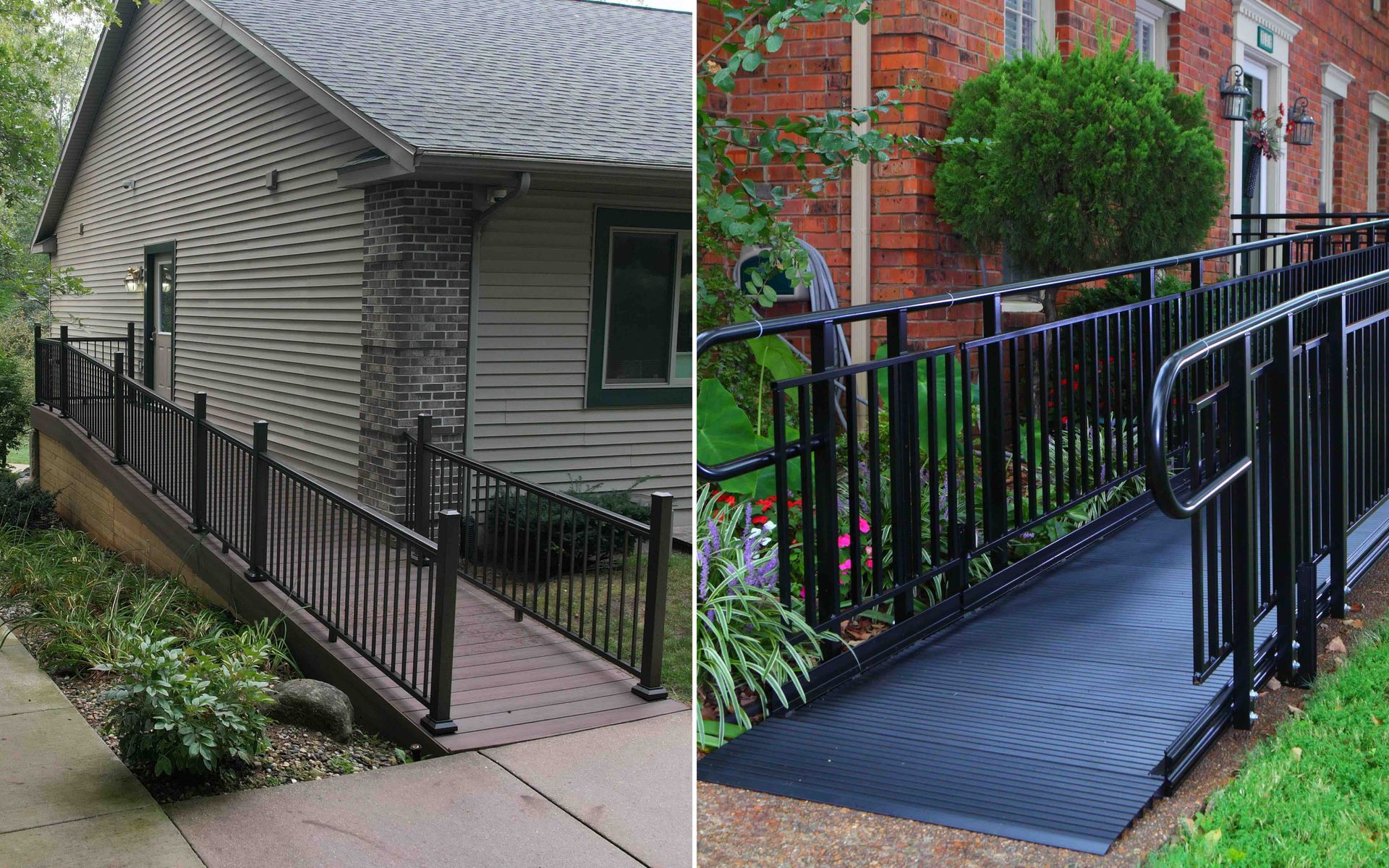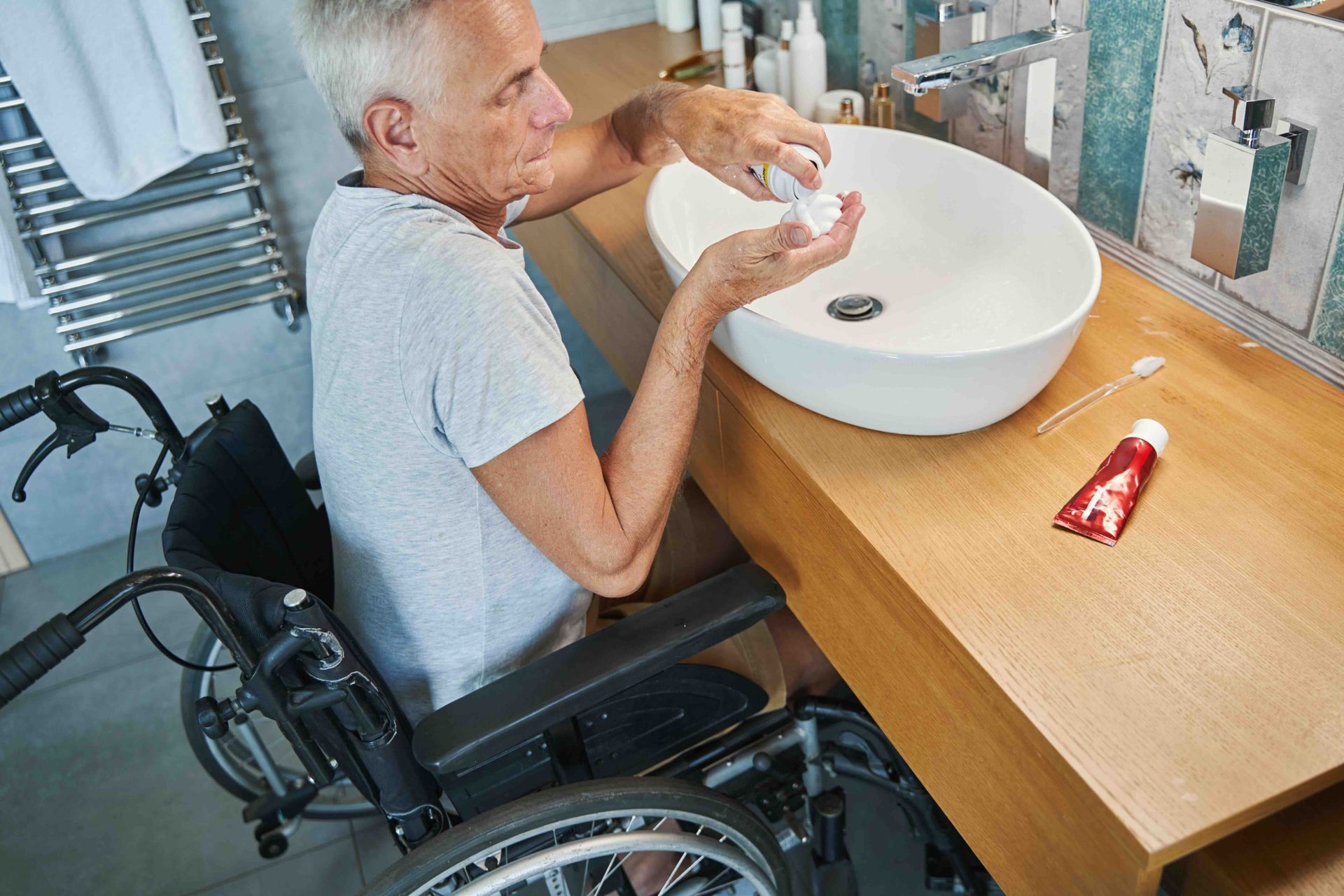Creating a home that is accessible for individuals with disabilities requires thoughtful planning and the integration of solutions that prioritize comfort, safety, and independence. Home modifications can transform living spaces into supportive environments that allow individuals to thrive.
If you’re thinking of barrier-free construction and home modification to improve your home's accessibility, Lakeshore Barrier Free is here to help.
We offer barrier-free home construction for regular homes, group homes, and other residential properties.
We provide barrier-free home construction in Michigan. Check out our Areas of Service for the complete list. If you’re worried about the costs of barrier-free construction or home modifications in Michigan, it’s always a good idea to check out our Financial Resources page.
Patient Lifts
Patient lifts are invaluable for individuals with mobility challenges, providing a safe and efficient transfer between beds, wheelchairs, or bathrooms. These devices reduce the physical strain on caregivers while ensuring the individual being assisted remains secure. There are different types of lifts to suit various needs.
Ceiling-mounted lifts are a permanent solution installed on tracks that allow smooth movement across a room. Portable lifts, on the other hand, offer flexibility and can be moved between locations as needed, making them ideal for homes with limited space or temporary use. Both options are designed to maximize safety and convenience during transfers. Contact Lakeshore Barrier Free today for barrier-free home construction in Michigan.
Wheelchair Ramps
Permanent wheelchair ramps and wheelchair ramp rentals are critical for ensuring smooth transitions between different levels of a home or entry points. Ramps are crucial for barrier-free living spaces.
They eliminate barriers caused by steps and uneven surfaces, making it easier for wheelchair users to navigate independently. Often constructed from concrete or metal, permanent ramps provide long-term durability and require professional installation.
Portable ramps are lightweight and foldable, offering a versatile solution for temporary or travel needs. When installing a ramp, it's crucial to follow ADA guidelines, which specify appropriate slope gradients, width, and handrail requirements to ensure safety and usability. And let’s not forget: be sure to work with an actual accessibility professional for these home modifications!
Stair Lifts
Stair lifts are a practical solution for individuals living in multi-level homes. These motorized chairs are installed on a rail system that runs along the staircase, enabling users to ascend and descend safely. Stair lifts can be customized to fit straight, curved, or even spiral staircases, ensuring adaptability to various home designs. Many models have safety features such as seat belts, swivel seats for easy entry and exit, and battery backups to function during power outages. For individuals with limited mobility, stair lifts provide a reliable way to access all areas of their home without the physical strain of climbing stairs.
Walk-in Bathtubs and Roll-in Showers
Bathrooms are among the most hazardous areas in a home due to the risk of slips and falls. Walk-in bathtubs and roll-in showers are specially designed to enhance safety and accessibility. Walk-in tubs feature low thresholds, making it easy to step in and out without tripping. On the other hand, roll-in showers are barrier-free and wheelchair-accessible, offering ample space for maneuvering. Both options can provide additional safety features, such as grab bars, non-slip flooring, and handheld showerheads, to ensure a secure and comfortable bathing experience.
As home modification and accessibility professionals, Lakeshore Barrier-Free proudly uses the best brands and products for our projects. Check out our preferred brands here.
Pull-down Shelving Systems
Pull-down shelving systems are a practical addition to kitchens and storage areas, especially for individuals with limited reach. These systems allow shelves to be lowered to a convenient height with minimal effort, making accessing items stored in high cabinets easier. They are instrumental in promoting independence for individuals with mobility challenges, as they eliminate the need for step stools or assistance from others.
Lowered Light Switches and Thermostats
For wheelchair users or individuals with limited mobility, adjusting the placement of light switches and thermostats can significantly improve accessibility. Installing these controls approximately 48 inches from the floor ensures they are within easy reach. This simple modification allows users to independently manage their home's lighting and temperature, promoting convenience and autonomy.
Motorized Window Treatments
Motorized window treatments, such as blinds or curtains, offer a modern and convenient way to control light and privacy in a home. Operated through remote controls, smartphone apps, or voice commands, these systems eliminate the need to reach for cords or manually adjust heavy drapes. They are particularly beneficial for individuals with limited upper-body strength or mobility, making everyday tasks more manageable.
Elevated Toilets
Standard toilets may be too low for individuals with mobility challenges, causing discomfort and difficulty during transfers. Elevated or comfort-height toilets are designed to address this issue by sitting higher off the ground, reducing strain on the knees and back. These toilets make it easier for users to sit down and stand up, providing a more comfortable and accessible solution for bathroom needs.
Transfer Benches
Transfer benches are essential for individuals who have difficulty getting in and out of a bathtub or shower. These benches allow users to sit and slide safely into position, eliminating the risk of slips or falls. Many models feature adjustable legs, backrests, and non-slip surfaces, providing added stability and comfort. Transfer benches are a simple yet effective tool for enhancing bathroom safety and independence.
Accessible Closets
Accessible closets are designed to accommodate the needs of individuals with mobility challenges. Features such as lowered clothing rods, adjustable shelving, and pull-out drawers make reaching and organizing personal items more accessible. These modifications ensure that closets are functional and user-friendly, enabling individuals to maintain independence and efficiently manage their wardrobes.
Handrails Along Hallways
Adding handrails in hallways supports individuals with balance issues, making it easier to navigate the home independently.
Adjustable Beds
Adjustable beds allow users to raise or lower sections for comfort, making sleeping and transferring easier.
Lazy Susans in Cabinets
Lazy Susans provide rotating storage, making accessing items in hard-to-reach corners of kitchen or pantry cabinets easier.
Side-opening Ovens and Appliances
Side-opening ovens and appliances with front controls are more accessible for individuals in wheelchairs or with limited reach.
Wheelchair-accessible Desks and Tables
Desks and tables with open space underneath provide legroom for wheelchair users, enabling comfortable work or dining areas.
Folding Shower Seats
Folding shower seats are ideal for roll-in showers, providing a secure place to sit while bathing.
Under-cabinet Lighting
Under-cabinet lighting enhances visibility in kitchens and workspaces, reducing the risk of accidents for individuals with vision impairments.
Emergency Call Systems
Installing an emergency call system or panic buttons in critical areas of the home provides peace of mind, ensuring help is readily available in case of an accident.
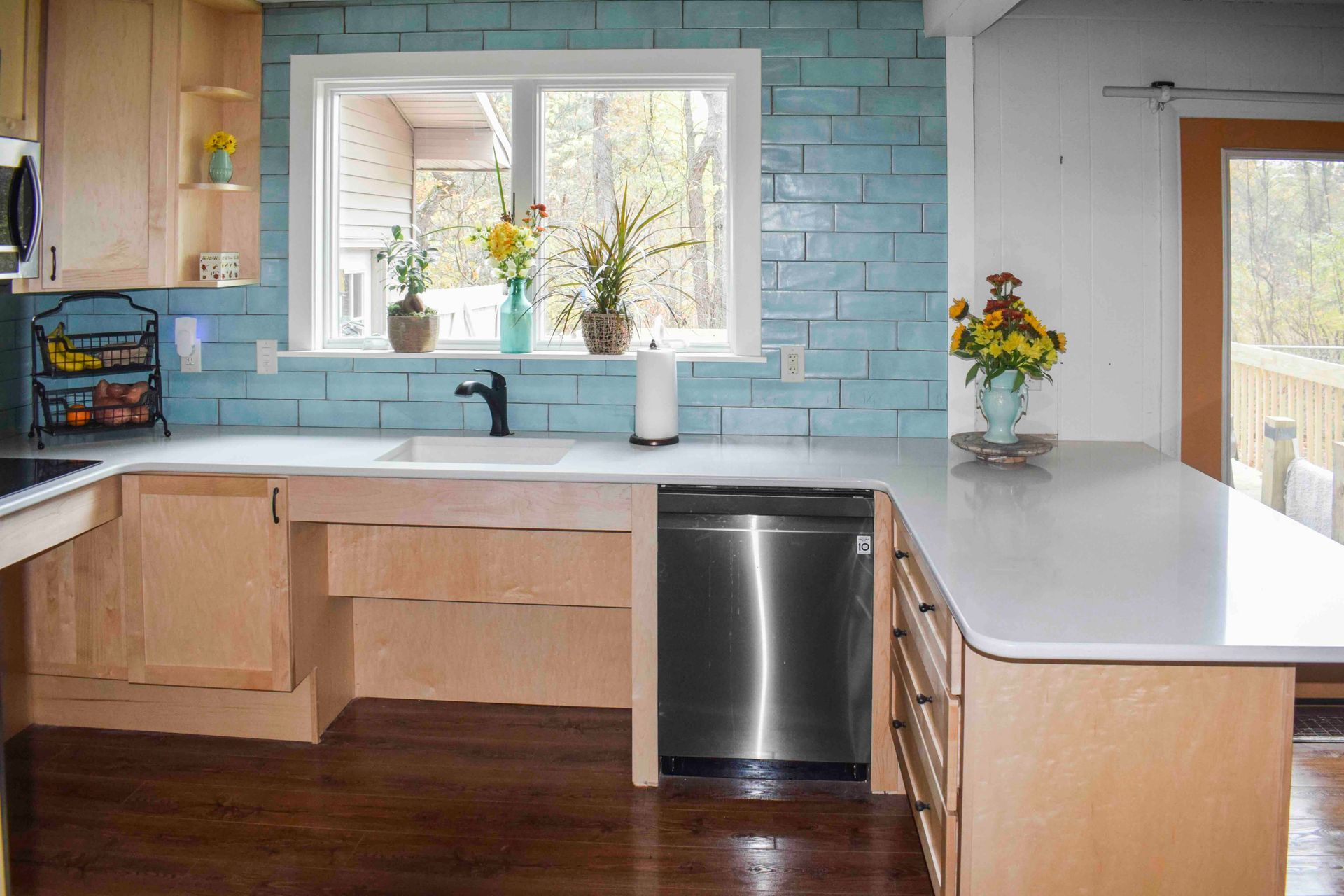
Considerations for Implementing Accessibility Features
When planning home modifications to enhance accessibility, it is crucial to tailor changes to the individual's specific needs, preferences, and medical conditions. Accessibility features should promote safety and usability and support independence and quality of life. To achieve these goals, collaborating with occupational therapists and accessibility-focused contractors and referring to the Americans with Disabilities Act (ADA) guidelines can make a significant difference in creating an inclusive home environment.
Occupational therapists bring valuable insight into designing modifications that align with the individual's abilities and limitations. For example, they may recommend features like grab bars positioned at appropriate heights or suggest adjustments to kitchen layouts for wheelchair users. Accessibility-focused contractors specialize in implementing these recommendations, ensuring that installations meet structural and functional requirements.
The ADA guidelines provide a framework for accessibility standards, even though they are not legally mandated for private residences. Following these standards ensures that modifications are practical and safe. For example, the ADA recommends that wheelchair ramps have a slope ratio 1:12, meaning one inch of vertical rise requires at least 12 inches of horizontal run. Similarly, doorways should be at least 32 inches wide to accommodate standard wheelchairs and light switches should be installed no higher than 48 inches from the floor for easy reach.
Other considerations include maintaining adequate space for turning radii in rooms, especially for wheelchair users, and incorporating non-slip flooring in high-risk areas like bathrooms. Combining personalized planning with professional expertise and ADA compliance allows homeowners to create spaces that foster comfort, accessibility, and dignity for individuals with mobility challenges. Consulting these resources ensures that every aspect of the home is thoughtfully adapted, balancing functionality with aesthetics for a truly inclusive living environment.
Funding Options for Home Accessibility Improvements
Home accessibility modifications can be costly. However, various funding options are available, including:
- Grants and Government Programs
Programs like Medicaid waivers, the VA's Specially Adapted Housing (SAH) grant, and state-specific initiatives often cover home modifications. If you are a veteran or are caring for one, please refer to our Veteran Resources page for more information. - Tax Deductions
Some home improvements for medical purposes may qualify as tax-deductible expenses. Consult a tax professional for guidance.
The Impact of Accessibility Improvements
Creating an accessible home has profound benefits for individuals with disabilities and their families.
By incorporating thoughtful modifications, such as wider doorways, ramps, grab bars, and smart home technologies, individuals with mobility, sensory, or cognitive challenges can live independently, navigate their spaces safely, and participate more fully in daily activities. These changes empower individuals and reduce the physical and emotional strain on caregivers, allowing them to focus more on companionship and support rather than on physically demanding tasks.
Accessibility improvements enhance the overall quality of life for everyone in the household. For example, features like no-step entries or intelligent lighting systems are not just beneficial for individuals with disabilities—they also provide convenience for older adults, parents with young children, or anyone recovering from an injury. Additionally, accessible design fosters a sense of dignity and confidence, enabling individuals to approach life with greater freedom and self-reliance.
From a broader perspective, prioritizing accessibility reflects a commitment to inclusivity and equity. Homes that accommodate diverse needs promote social integration and reduce barriers that prevent individuals from achieving their full potential. These modifications also increase a property's long-term value and appeal, as universal design features are increasingly sought after by homebuyers.
Ultimately, investing in accessibility creates welcoming, adaptable, and supportive homes for everyone. By considering the diverse needs of residents and visitors alike, we build a more functional space and a more compassionate and inclusive society. Accessibility is not just a practical choice—it's a powerful statement of care, respect, and belonging.
TALK TO THE EXPERTS OF LAKESHORE BARRIER FREE TODAY!
We believe that everyone should have access to every area of their home! We work directly with you to make sure that every grab bar, bathroom sink, kitchen countertop, patient lift, and more is at the perfect location for you and your loved ones. Call us at
(616) 477-2685 or email us at
Info@LakeshoreBarrierFree.com
Share this blog


